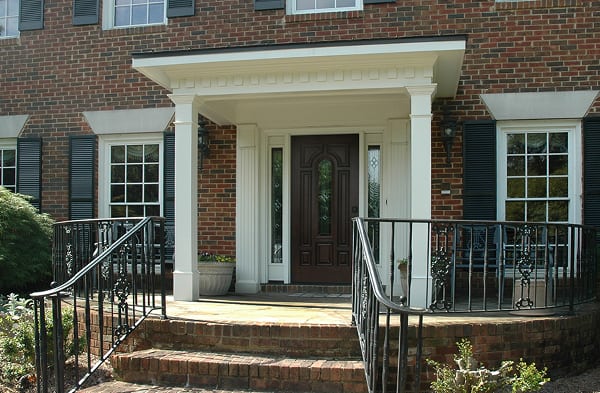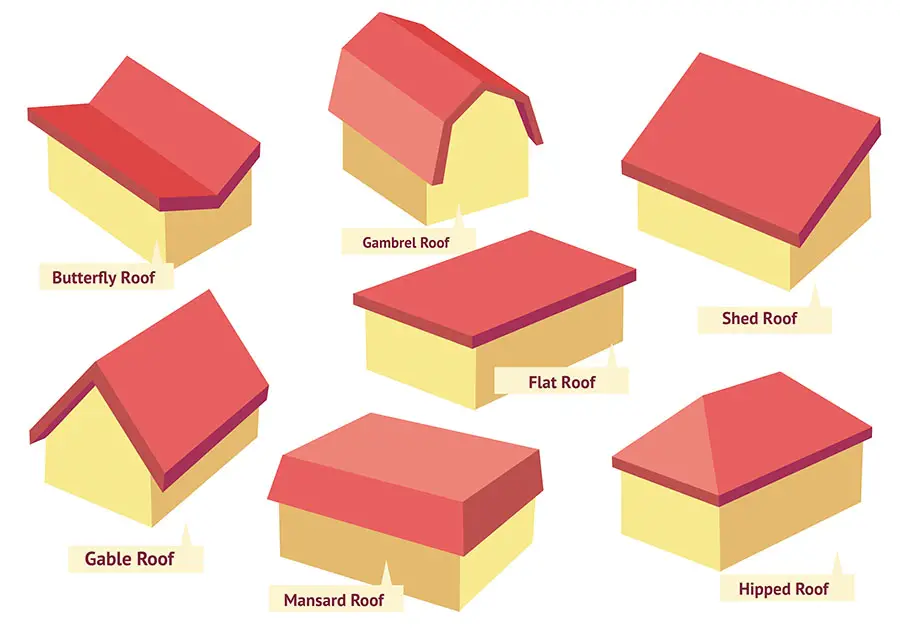
Corrugated roofĬorrugations are repeated wave-like patterns across an area of roofing. If there is an upstairs, extra space can be won by the use of dormer windows, otherwise the effective floor space would be too small. The A-frame roof is similar to the gable roof, but the roof reaches all the way to the ground (or a short distance above ground level) – like an “A” shape. A glass roof is preferable for maximum light, but the amount of light entering through the side panes is usually sufficient for most conservatories, so there’s often a traditional roof, perhaps with skylights. Because there’s no set shape to a conservatory, they can take many forms, for example hip, flat or gable. Conservatory roofĬonservatory roofs fall into three categories: glazed, opaque and combination. However, with skylights or dormer windows, the top floor can still be light, airy and spacious. They are often used to create an extra floor, although it will only be half the size of the floor(s) below because the roof will be lower on one side.
#Different types of roofs plus
Saltbox roofĪ saltbox roof is similar to a gable, but the two roof faces are different sizes, with one wall higher than the opposite, plus two gable ends with irregular shapes. Viewed from above, the house will have an X, T or L shape. Crossed gableĪ crossed gable roof is where two or more separate gable roofs project at 90 degrees from the main body of the house.

It will usually project outwards at the gable ends by a small amount, and the ends will probably be boarded or tiled rather than brick. With box gable roofs, the main structure of the house consists of four rectangular walls, and the roof sits on top as a separate architectural part. With open gables, the walls at the gable ends visibly reach the peak of the roof in a triangular form. Gable roofs also have larger loft spaces than hip roofs (see below), which is another added benefit. Because the triangle is the most stable shape in engineering, the gable forms a strong roof, making it one of the most popular choices for British homes. Think Monopoly houses and you’ll get the idea. This means the vertical walls on two opposite sides reach all the way to the apex of the roof, but on the other two sides they only reach the gutter. It consists of two equally sized sloping roof faces that meet at the top ridge in the middle on a rectangular house. The gable roof is the most basic type of sloping roof. Well that’s about to change – we’ll make a roof-spotter of you yet! Gable Roof The strange thing is, even though they’re fundamental structural elements, with functional as well as aesthetic purposes, most of us probably don’t pay too much attention to them, even when we’re home-seeking. An alternative to this method sees insulation boards made into shallow wedge sections to provide the fall.Do you know your box gable from your open gable? Your bonnet from your gambrel? If you have no idea what we’re talking about, these are just some of the different types of roofs that sit atop the nation’s homes. The firring strips allow the roof to have the slope required to enable water run-off to the rain water outlets. The roof deck material is usually chipboard or plywood.

Strutting is fixed between the joists to provide lateral restraint.ĭepending on the roof build up, a roof deck is then fixed to the joists over firring strips, to provide the fall of the roof.

TRADA and Approved Document Part A give guidance on sizes of joists for flat roofs relating to spans and loading. Joists are placed on edge, spaced at 400-600mm centres, supported by external and internal load bearing walls. The construction of the flat roof is similar to that of the timber upper floor. Load bearing or primary structure, usually constructed in timber in a residential construction. Roof deck, providing the base for the waterproof membrane, and in some cases the insulation Waterproof membrane to prevent water penetrating the structure and interior of the building A purposefully designed slope in the roof either through firrings or laying joists on a slope helps to evacuate water from the roof and avoid pooling.Ī flat roof construction usually consists of the following: A roof is considered to be flat when it has a slope of 10 o or less to the horizontal, according to BS6229.


 0 kommentar(er)
0 kommentar(er)
